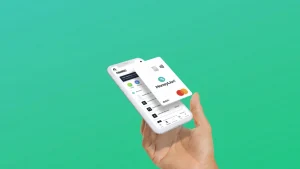App Monetization
APP monetization involves finding ways to generate income from your mobile app while offering it for free to users. It’s about turning your app’s popularity and usefulness into a source of revenue.
Importance of having a clear monetization strategy to sustain your app’s growth and development.
Having a well-defined app monetization strategy is crucial to ensure that your app can continue to grow and improve over time. It’s like having a roadmap that guides you toward success while keeping both users and profits in mind.
1. Understanding App Monetization
App monetization is all about turning your free app into a source of income. It’s like finding creative ways to earn money while your users enjoy your app without any cost. But why is this so important? Well, app monetization is essential because it allows you to keep your app running and growing. You get to offer your app for free to users, and at the same time, you create various opportunities to make money from it.
One big idea here is exploring different ways to generate revenue, all while making sure your users still enjoy the app without any charges. It’s like finding secret paths to income while keeping your app’s doors wide open for everyone.2. Defining Your App’s Value Proposition:
- Emphasize the importance of delivering value to users before thinking about monetization:Before diving into making money with your app, it’s crucial to remember that delivering real value to your users comes first. People download and use your app because it offers something they need or enjoy. So, focus on creating an app that users love and find useful. When your app genuinely enhances their lives or solves a problem, they’ll be more likely to stick around and engage with your monetization efforts. In other words, value is the foundation on which successful app monetization strategies are built.
- how identifying your app’s unique selling points can lead to better monetization strategies: Every app has something special that sets it apart from the rest. These unique selling points (USPs) are what make your app stand out in a crowded market. When you identify and highlight these USPs, you’re not only making your app more attractive to users, but you’re also setting the stage for effective monetization.
Think about it: your USPs provide valuable clues about what makes your users excited and engaged. By understanding what draws people to your app, you can tailor your monetization strategies to align with their interests. For example, if your app’s USP is its exceptional user experience, you might explore premium subscriptions that offer even smoother interactions.
In essence, your app’s unique qualities are like the secret ingredients that make your monetization strategies more flavorful and successful. By leveraging what makes your app special, you can create monetization methods that resonate with users, enhancing their experience while generating revenue.
2. Choosing the Right Monetization Model
When it comes to making money from your app, there are different paths to explore. Let’s take a closer look at some popular monetization models:
- Freemium Model: This model offers a basic version of your app for free, while charging for premium features or additional content. It’s a great way to attract a large user base and then encourage users to upgrade for enhanced functionality.
- In-App Purchases: With in-app purchases, users can buy virtual goods, upgrades, or additional content within the app. This model works well for apps that provide a game-like experience or offer additional value through extra features.
- Ads: Integrating ads into your app allows you to offer it for free to users while generating revenue from advertisers. This model is effective for apps that have a lot of user engagement and screen time.
- Subscriptions: Subscriptions offer users access to premium features or content for a recurring fee. This model is ideal for apps that provide ongoing value, such as streaming services or productivity tools.
| Monetization Model | Benefits | Considerations |
| Freemium | – Attracts a large user base | – Convincing users to upgrade can be challenging |
| – Opportunity for upselling premium features | – Balancing free and paid features | |
| In-App Purchases | – Generates revenue from engaged users | – Striking the right balance to avoid over-monetization |
| – Flexible pricing options | – Ensuring in-app purchases enhance user experience | |
| Ads | – Offers consistent revenue | – User experience may be affected if not managed well |
| – Requires minimal user spending | – Choosing the right ad placement and frequency | |
| Subscriptions | – Provides steady income | – Need to continually deliver value to retain subscribers |
| – Builds a loyal user base | – Offering compelling premium content |
The right model depends on your app’s nature and user behavior. For example, if your app offers addictive gameplay, in-app purchases might be a hit. If your app delivers premium content, subscriptions could work wonders. By understanding your app and its users, you can choose the monetization model that aligns perfectly and sets you on the path to success. Discuss the pros and cons of each model and how they align with different types of apps.
3. Understanding Your Target Audience
Knowing your audience is like having a map to successful app monetization. Here’s why it matters:
- Significance of Knowing Your User Base: Your app’s success hinges on its appeal to users. When you understand who your users are, what they like, and what they need, you can tailor your monetization approach to meet their expectations.
- Impact of User Behavior, Demographics, and Preferences: Think of your users as the stars of your monetization show. Their behavior—how often they use your app—and their preferences—what they enjoy doing in the app—play a key role in deciding the best way to monetize.
For instance, if your users love unlocking special features, in-app purchases might be a hit. If they’re open to watching ads in exchange for rewards, ads could be your go-to strategy. And if they’re willing to pay for premium content, subscriptions might be the perfect fit.
In short, your users’ actions and interests guide your monetization strategy. So, understanding your audience’s behavior, demographics, and preferences is like having the secret recipe for a successful monetization plan.
4. In-App Purchases and Virtual Goods
Imagine if your app could offer users something extra special, like a bonus level in a game or exclusive content in a social app. That’s where in-app purchases come in.
- Concept of In-App Purchases: In-app purchases allow users to buy virtual goods, features, or content within the app. These purchases can enhance the user experience, making your app more engaging and exciting.
- Enhancing User Engagement: In-app purchases add a layer of excitement by giving users the opportunity to personalize their experience or unlock new levels of interaction. When users invest in your app, they become more committed and engaged.
- Examples of Successful Apps: Think of games that offer power-ups or new characters for purchase, or social networking apps that allow users to buy premium stickers or themes. These apps effectively leverage in-app purchases to enhance user engagement.
- Designing Appealing Virtual Goods: To design appealing virtual goods, focus on items that align with your app’s theme and resonate with your users’ interests. It could be special items, customization options, or advanced features.
- Incentivizing Users to Make Purchases: Offer limited-time discounts, bundles, or loyalty rewards to motivate users to make purchases. Create a sense of exclusivity and value to encourage them to invest in your app.
Remember, the goal is to offer value and excitement to your users through these purchases. When they see the benefits of spending a little extra within your app, they’re more likely to engage, stay loyal, and even share their experience with others.
5. Ad Monetization
Ever wondered how apps you love stay free? Ads are the answer! Let’s explore:
Use of Ads as a Revenue Stream: Ad monetization involves displaying ads within your app as a way to generate income. It’s like having advertisers pay you to showcase their content to your users.
Different Types of Ads: There are a few types of ads you can use:
- Banner Ads: These are small ads that appear at the top or bottom of the screen. They’re subtle and don’t interrupt the user experience.
- Interstitial Ads: These are full-screen ads that appear between content, like during transitions or breaks.
- Rewarded Ads: These are ads that users can choose to watch in exchange for rewards, like in-game currency or premium content.
- Placement of Ads: Placing ads strategically is key. You want them to be noticeable but not annoying. Banner ads are great for apps with continuous content, interstitial ads can work well during natural breaks, and rewarded ads provide value to users while generating revenue.
- Balancing User Experience and Ad Revenue: Finding the right balance is crucial. Too many ads can annoy users and hurt engagement, while too few might not generate enough revenue. Prioritize user experience by choosing ad formats that align with your app’s content and user behavior.
Remember, the goal is to provide value to both users and advertisers. By integrating ads seamlessly and respecting the user experience, you can create a win-win situation: users get a free app with valuable content, and you get revenue from ads.
6. Subscription Models
Ever thought about offering your users a VIP experience? Subscription models can make that happen. Let’s dive in:
- Subscription-Based Monetization Model: This model involves offering users access to premium features, content, or benefits in exchange for a recurring fee. It’s like giving users the option to upgrade to a more enhanced version of your app.
- Benefits of Subscriptions: Subscriptions create a steady income stream and foster a loyal user base. They allow you to consistently provide value to subscribers while maintaining a free version for other users.
- Structuring Subscription Tiers and Pricing: Consider offering different subscription tiers with varying levels of benefits. For instance, a basic tier might offer limited features, while a premium tier includes advanced functionality. Pricing should reflect the value users receive and remain competitive in the market.
- Promoting Subscriptions Effectively: To promote subscriptions, showcase the unique benefits users will get, such as exclusive content, ad-free experience, or advanced features. Use appealing visuals and persuasive messaging to communicate the value of upgrading.
- Incentives and Trials: Offer trial periods to let users experience the benefits of a subscription before committing. Additionally, consider running promotions or offering discounts to encourage users to subscribe.
By offering subscriptions, you’re giving users the option to level up their app experience while ensuring a steady flow of revenue for your app’s continued growth and improvement.8. Freemium Approach:
Conclusion:
Choosing Your Path: As you embark on the monetization journey, remember that success lies in aligning your strategy with your app’s unique value and the needs of your user base. There’s no one-size-fits-all approach; it’s about finding what works best for your app’s context.
Value and Strategy Combined: Successful monetization isn’t just about making money—it’s about delivering real value to your users while implementing effective revenue-generation methods. By focusing on the intersection of user satisfaction and strategic choices, you’re well on your way to a thriving app that benefits both you and your users.




